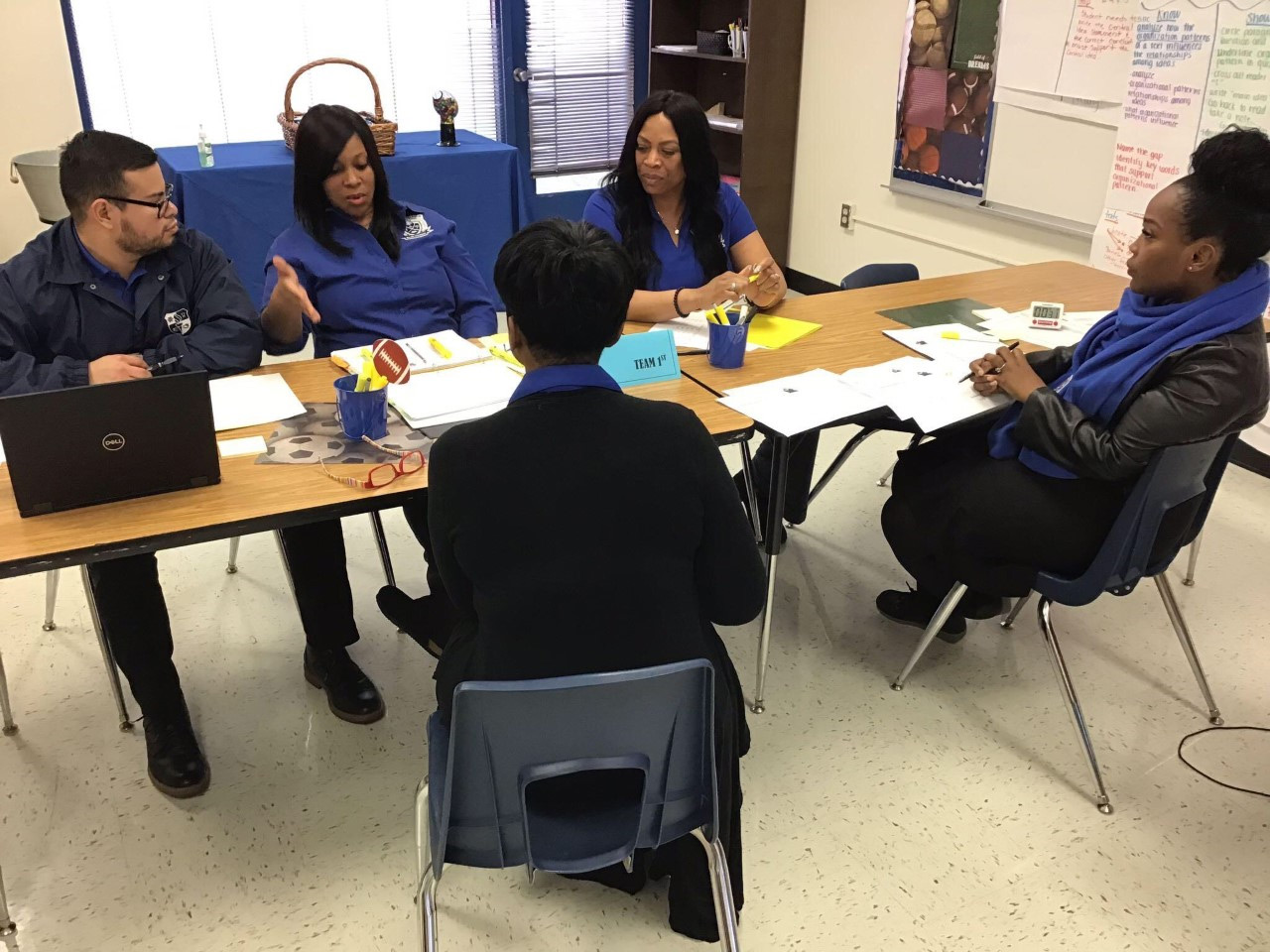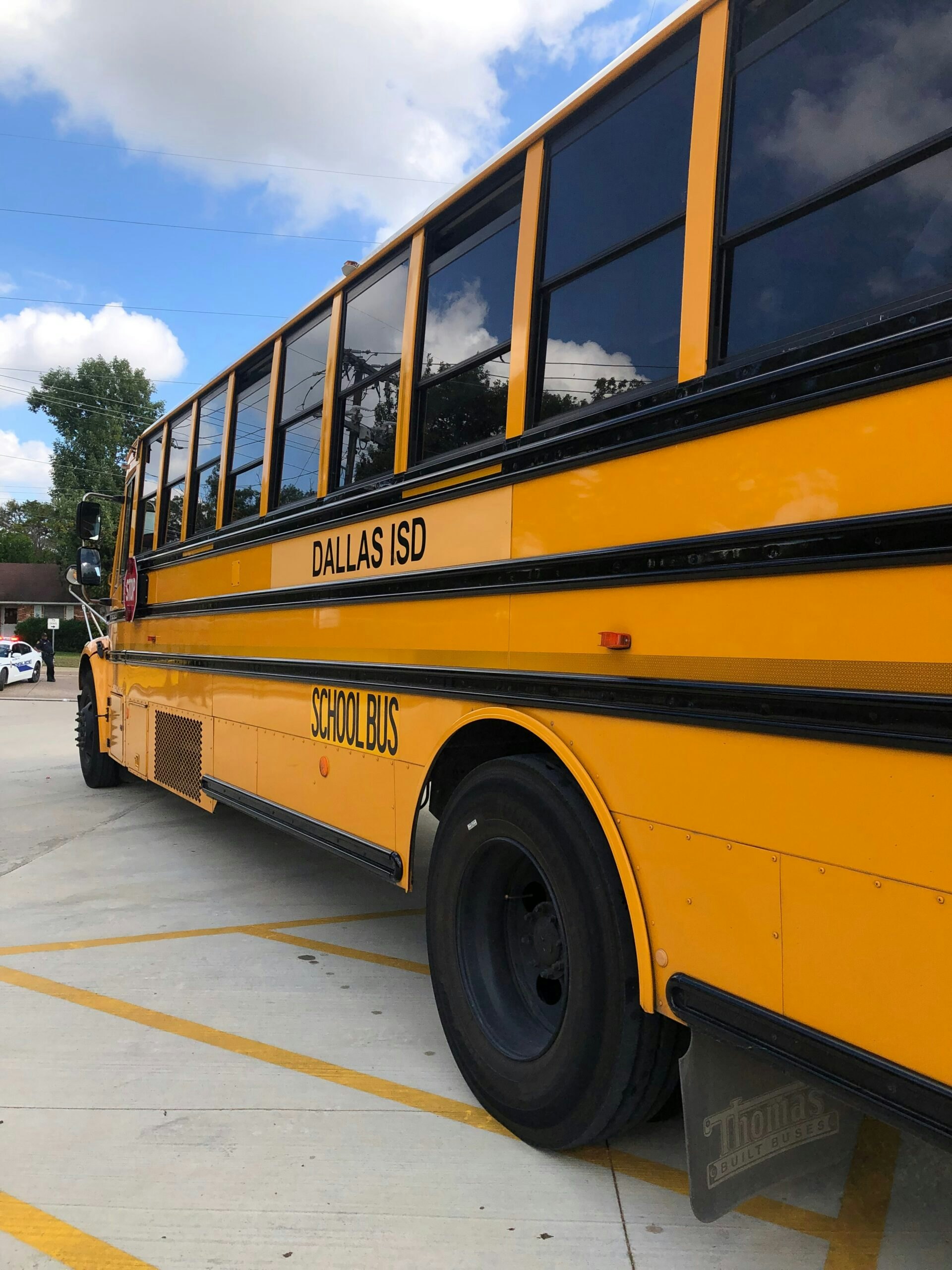The George W. Bush Institute, in conjunction with The 74, a leading national education digital publication, is presenting a series of essays that look at the evolution and impact of the Dallas Independent School District’s Accelerating Campus Excellence (ACE) initiative. In this article, we look at how principals and teachers use data to drive instructional excellence.
Data in the Moment: How Dallas ISD’s ACE Program Helps Students Progress
- Chapter One: The Power of Differentiation
- Chapter Two: Data Drives Educational Excellence
- Chapter Three: The Difference a Principal Makes
- Chapter Four: What Happens Next
The Dallas Independent School District (DISD) strives toward having a strong majority of an ACE school’s faculty and leadership being rated proficient. This starts with faculty members being asked to reapply for their positions before a school can become an ACE campus. Principals then meet with teachers to discuss the new vision for the school and requirements for the teachers and staff.
In the Martin Luther King Jr. Learning Center’s case, 20 of the school’s 27 teachers were new to the campus in the 2018-2019 school year, its first as an ACE school. In the process, the school went from 21 percent of its teachers being rated proficient to 65 percent meeting that standard.
During a springtime visit to the MLK Learning Center, it was common to see teachers walking around their classrooms with clipboards in hand. They would circle desks, talk with students about the assignment they were working on, and jot down notes about the work of individual students.
Clipboard monitoring allows teachers to use real-time data to assess the progress of students as they work on in-class assignments. They can then circle back to intervene with struggling students, sometimes in small groups. Jolee Healey, a former principal who oversees DISD’s ACE program, calls this “data in the moment.”
Another ACE technique is using clocks to pace instruction. The principals and teachers know how many instructional days and minutes they have each year, so they are focused on making each minute count. Disciplined instruction like this may be one of the more unheralded aspects of successful teaching. If educators wander off their lesson plans, they are likely to fall behind where students are expected to be in learning a state’s standards. “Every minute counts for quality learning,” Ms. Healey emphasizes.
Of course, as she also notes, instructors need the time to teach a subject and work with students who are not on track. But the clock reminds them of the importance of pacing. Otherwise, they may end up cramming – or skipping – information as a semester ends, and student learning suffers.
Knowing the data
Each classroom has a wall display showing how many students are on track in a particular subject. The categories include “masters,” “meets,” “approaches,” and “growth.” Every student is represented by a number to protect their identity, but a visitor can quickly see where students are on their path to becoming proficient in subjects like reading, math, and English.
Students likewise know their own data. In a class last spring, one of the school’s homeless students proudly stood up to explain that he now hit the “masters” mark in reading. By owning their data, students get to show their progress as well as understand what they need to do to improve.
Of course, the purpose of sharing student progress data isn’t to shame slower learners, and the teachers are careful in this regard. Rather, it is to encourage progress and to more strategically work with those students who need particular help. Clipboard monitoring also allows teachers to put together groups to help students catch up in a subject, and classroom growth is celebrated.

Data review meetings are a key part of the weekly routine on ACE campuses. The gatherings of teachers with the school’s administrators to review student results are an ACE hallmark: Professional Learning Communities (PLCs). PLCs meet twice weekly during planning periods, although they can meet each day. “You will see teachers rehearsing together,” says Rockell Stewart, who led the MLK Learning Center in the 2018-2019 school year.
Ms. Healey explains that the sessions challenge teachers to use data to design lessons that encourage learning. This was evident in the exchanges that fifth grade teachers Amelia Carroll and Erik Acosta had one spring morning with Ms. Stewart and Freda Mitchell, the MLK Learning Center’s instructional coach.
As the foursome reviewed a group of fifth graders’ reading scores, they drilled down into the problems some were having with inferences and discussed ways to help them improve. Mr. Acosta then explained to the group how his bilingual students had shown growth in learning an English standard that requires grasping plots in a story. Nearly 90 percent of his students met the state’s standards on a mock state achievement exam.
The meeting, run in a disciplined, structured way, followed a crisp agenda with norms and a time-line of discussion items. The group worked through issues like how to teach a particular English standard. They also made use of data charts on the wall, data binders, and outlines showing what the state expects the students to know in a subject like fifth-grade reading.
Ms. Stewart and Ms. Mitchell would interject with questions or comments about how best to work with particular students. The group engaged in talks about “unpacking questions” on a state exam so students could better understand them. They concentrated on what stood in the way of particular students progressing in a subject: Was it a conceptual problem or a procedural one? As one example, they spent time thinking about strategies that could help a student who only got 45 percent of questions right on the mock state English exam.

Some may say this aggressive monitoring is simply “teaching to the test.” But understanding the state’s expectations and tearing apart questions to make sure students know the content helps them to truly learn a subject. Some children do suffer from real test-anxiety and supports are available to help them. And some students are made anxious about tests by the words and actions of the adults around them. The educators around this table agreed, however, that exams are a teaching tool for all students.
The group also emphasized that learning starts with building readers. That requires spending classroom time learning how to read fiction and non-fiction books. “Then, they understand the questions,” Ms. Mitchell said. “We are trying to build the habits of great readers.”
Some critics contend that a robust focus on data takes time away from the fundamentals of education, such as teaching a child how to enjoy reading. But the ACE model shows that data-informed instruction need not be at war with the fundamentals. Instead, it helps to make sure that students and teachers receive the supports they need.
To be sure, an intense concentration on data does reshape how some teachers approach their craft. Jose Lara is a sixth-year first-grade teacher at MLK whom Ms. Stewart asked to stay on at the school when it became an ACE campus. He conceded that the strategy takes a lot of work and requires adapting to a use of so much information at a fast pace. “We didn’t go deeply into data before,” he noted as his first-grade class worked on an assignment one morning. But Mr. Lara said the data focus “works wonders.”
Indeed, results at his school have been encouraging. An impressive 90.3 percent of MLK’s fifth graders passed the state’s reading exam at the end of the 2018-2019 school year. That represented a 20.7 percent increase from the scores of fifth graders on the 2017-2018 reading exam. Similarly, 83.3 percent of fifth graders passed the state’s math exam, which was up from 60 percent the year before.
In the fourth grade, 58.6 percent passed the state’s reading exam and 60 percent passed the math test. Those numbers are not as impressive as the fifth-grade scores, but they were up from 38.5 percent in each subject in the 2017-2018 school year.

Scores went up in the third grade, too. In reading, 70.9 percent of third graders passed the exam. In math, 74.1 percent passed the state exam. A significant percentage of students are not passing in those critical subjects, but those numbers are still up by 10 percent and 23.4 percent, respectively, after only one year in the ACE program.
In fact, in every subject and every grade, students as a whole made double-digit gains. The only sub-population not experiencing any kind of growth were fourth-grade special education students.
The MLK Learning Center earned a B from the Texas Education Agency for its 2018-2019 results – up from a D in the previous school year.
Fort Worth’s model
Many of these data-driven strategies are at work as well in the Fort Worth Independent School District (FWISD). The district adopted a version of ACE in the 2017-2018 school year, calling its model the Leadership Academy Program. Priscila Dilley heads the network, which is a partnership between FWISD and Texas Wesleyan University in Fort Worth. (FWISD is one of the districts participating in the George W. Bush Institute’s School Leadership District Cohort research project, which is focused on principal talent management and implementation.)
At Como Elementary Leadership Academy, formerly a traditional elementary that long served a historically black neighborhood, Valencia Rhines leads a 440-student campus that is one of five in the district’s Leadership Academy Program.
Teachers in the academies are required to track daily data in their classrooms and then do a quick review of it at day’s end to see how it might shape instruction the next day. Along with data from classroom assignments, they draw upon results from bi-weekly assessments, which the Leadership Academies use to detect progress and struggles. Teachers then work with experts from the Teaching Trust, a North Texas nonprofit, to develop systems to overcome learning gaps, improve instructional monitoring, and strengthen the school culture.
In addition to the Teaching Trust professionals, Fort Worth’s district provides two instructional coaches for each school in its network. But Ms. Rhines considers the Teaching Trust experts a significant asset for improving instruction and tying lessons to meet the state’s expectations. “Correcting instruction has made a big difference,” echoes Ms. Dilley. She emphasizes how administrators focus on breaking a state academic standard down so teachers know how best to teach it. They concentrate on re-teaching so students don’t fall behind.
As at MLK, Como’s students are expected to track their own data. They know where they are supposed to be at each grade level. In two classes, teachers even had students lead meetings with their parents about their data.
Some differences exist, though.
Although 20 of Como’s 30 teachers were new to the school in 2017, Fort Worth ISD does not have evaluation tools like DISD’s Teacher Excellence Initiative (TEI) and its Principal Excellence Initiative (PEI). The district instead worked with Commit, a North Texas education organization, and Education Resource Group, a Houston-based education analytics firm, to identify effective teachers through a process that sat outside of its formal evaluation system.
Using state assessment data for teachers in grades three thru eight, and I-Station data for teachers in kindergarten thru second grade, these organizations helped identify FWISD teachers who showed proficiency in growing their students academically during a school year. An emphasis was placed on finding educators who could consistently achieve growth over multiple school years.
The district then used that list to more broadly examine the skills of the identified teachers via classroom observations. Administrators observed the teachers in their classrooms to witness whether their delivery of content, engagement of students, and ability to connect with their classroom matched the data.
The process has not been as structured when it comes to selecting principals. Leaders from Commit and FWISD used campus achievement data to identify possible candidates. A district team then selected principals to lead a Leadership Academy.
FWISD is reviewing their evaluation system to identify how it might be strengthened by multiple measures that reward strong instructional abilities and student success. Districts that try to apply the ACE model without using a multi-measure teacher and principal evaluation system to identify the most effective teachers and principals will likely struggle. Transparency and a high-quality process are critical for buy-in and equity over time.
Fort Worth’s Leadership Academies also don’t require their Professional Learning Communities to have weekly data meetings. In Fort Worth, the PLCs can use their time each week to plan lessons or review data. By contrast, data sits at the heart of all instructional design in Dallas, and the PLCs are built around the data.
Still, scores have risen at Como and FWISD’s other Leadership Academies. In the 2018-2019 school year, reading scores for all Leadership Academy students combined went up eight points; math scores went up four points; science scores went up 25 points; and writing scores went up nine points.
The scores reveal that students attending four of the five Academies – except John White Elementary School – are showing academic growth year over year. Proficiency scores are still low at every Leadership Academy campus. But academic gaps are being closed between Leadership Academy students (except those attending White) and the overall FWISD district averages in the 2018-2019 school year.
Continue reading Data in the Moment: How Dallas ISD’s ACE Program Helps Students Progress
Chapter One | Chapter Two | Chapter Three | Chapter Four




























